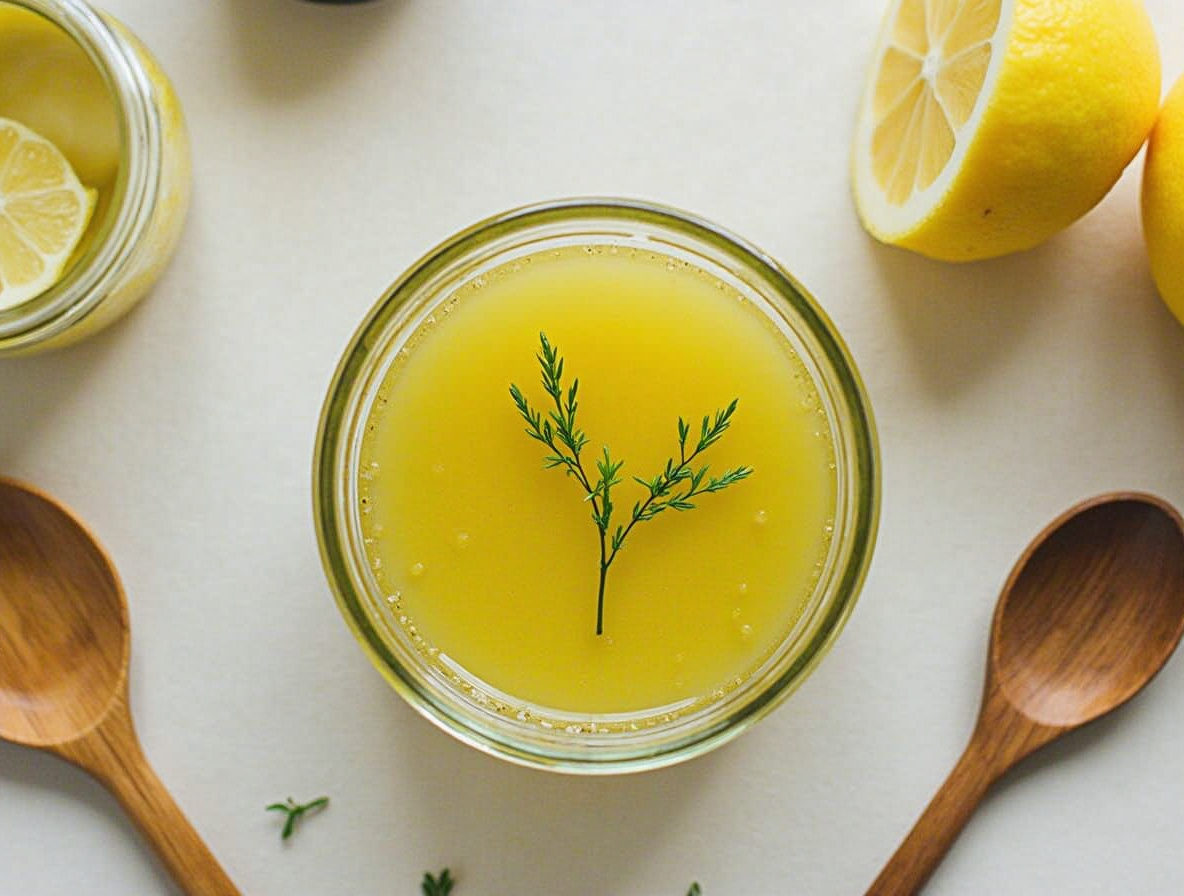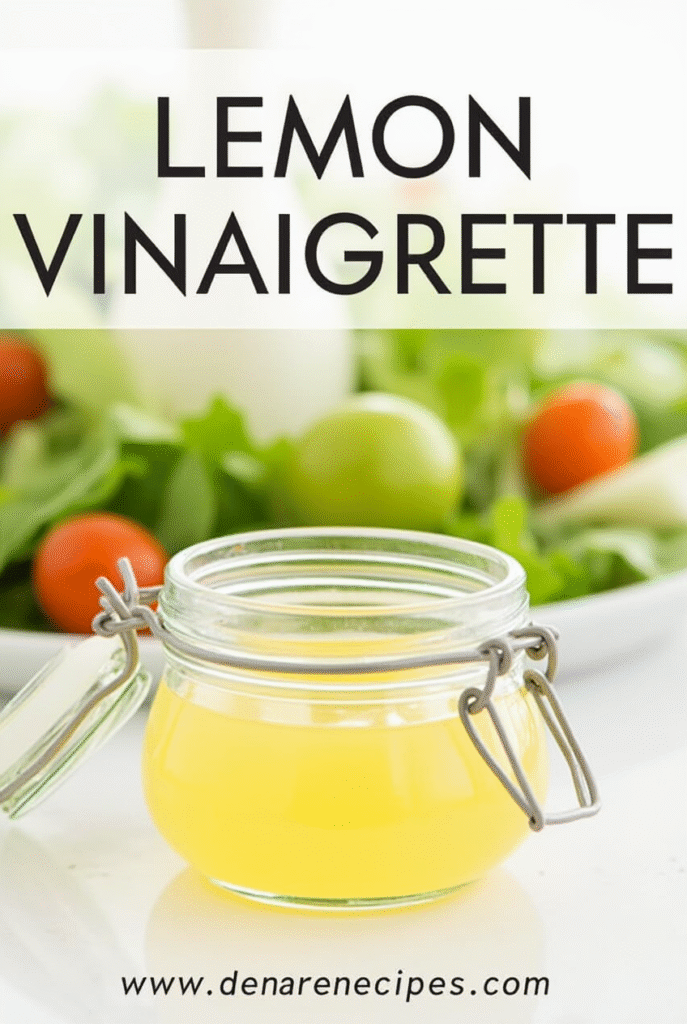Perfect Lemon Vinaigrette Recipe: A Chef’s Secret for Homemade Dressing
This lemon vinaigrette recipe requires just five simple ingredients you likely already have in your kitchen. Fresh lemons, olive oil, Dijon mustard, honey, and garlic come together to create a bright, flavorful dressing in under 10 minutes.
We’ve found that homemade lemon vinaigrette not only tastes better than store-bought alternatives but also offers incredible versatility. The best lemon vinaigrette recipe can transform ordinary salads, roasted vegetables, and grain bowls into extraordinary dishes. Furthermore, this simple lemon vinaigrette recipe can be customized to your taste preferences—make it more tart or add fresh herbs for a different flavor profile.
What makes our easy lemon vinaigrette truly convenient is its shelf life. When stored properly in the refrigerator, this dressing stays fresh for up to one week, making it perfect for meal prep. In fact, one batch yields enough for six generous side salads, giving you plenty of opportunities to enjoy its zesty flavor throughout the week.
The Essential Ingredients for a Simple Lemon Vinaigrette
Creating the perfect lemon vinaigrette begins with selecting high-quality ingredients. The beauty of this classic dressing lies in its simplicity—just a few well-chosen components yield remarkable flavor.
Fresh lemons are absolutely non-negotiable for a vibrant vinaigrette. Skip the bottled juice, which often lacks the bright, zesty quality that makes homemade dressing special. Most recipes call for both the juice and zest of fresh lemons, as the zest contains aromatic oils that provide intense citrus flavor impossible to get from juice alone.
Extra-virgin olive oil forms the foundation of any great vinaigrette. Its fruity, sometimes peppery notes balance the tart lemon while adding richness and body. Although good quality oil costs more, it makes a noticeable difference in the final taste.
Dijon mustard serves two critical purposes—it adds tangy depth and acts as an emulsifier, helping the oil and lemon juice stay blended rather than separating. Just a teaspoon is typically sufficient to achieve this effect.
Most chefs incorporate a touch of sweetness via honey or maple syrup to balance the acidity. This ingredient is technically optional, yet it perfectly counters the sharp garlic, lemon, and Dijon mustard.
Fresh garlic brings another dimension of flavor. While pre-minced versions exist, fresh cloves deliver superior taste that intensifies as the dressing sits.
Salt and pepper remain essential for making all flavors pop—they’re simple yet crucial components.
The traditional ratio for vinaigrettes is 3:1 (oil to acid), however, many modern recipes prefer less oil. A 3:2 ratio creates a more flavorful, less oily dressing. Alternatively, a 2:1 ratio offers a balanced middle ground.
Once you’ve mastered the basic recipe, consider enhancing your vinaigrette with:
- Fresh or dried herbs (basil, parsley, thyme, oregano)
- Finely chopped shallots instead of garlic for milder flavor
- A pinch of red pepper flakes for heat
- Additional mustard for thicker consistency
The ingredients combine to create a versatile dressing that brightens everything from simple green salads to roasted vegetables.
How to Make the Best Lemon Vinaigrette Recipe
Making your own lemon vinaigrette at home is surprisingly simple. The process takes just minutes and yields results far superior to store-bought options.
The Basic Method
Most chefs agree that making lemon vinaigrette follows a simple sequence: combine your acid components first, then gradually incorporate the oil. This technique creates a properly emulsified dressing. For the most basic approach:
- Add lemon juice, mustard, salt, pepper, garlic or shallots, and any sweeteners to a bowl
- Slowly stream in olive oil while whisking vigorously
- Continue whisking until the mixture looks creamy and well-combined
Choose Your Technique
Depending on your preference and available tools, you can create your vinaigrette in several ways:
Using a jar or container with a tight-fitting lid allows you to simply add all ingredients and shake vigorously until combined. This method is perfect for quick preparation and easy storage.
Alternatively, a small food processor or blender creates an exceptionally smooth, creamy texture—particularly helpful when incorporating herbs or garlic.
For those preferring the traditional approach, whisking in a bowl gives you complete control over the emulsification process.
Finding Your Perfect Ratio
While the classic vinaigrette formula calls for 3 parts oil to 1 part acid, contemporary chefs often prefer less oil. Many recipes now suggest a 2:1 ratio for balanced flavor, while others recommend a bold 1:1 proportion for maximum zestiness.
I personally prefer a 3:2 ratio—less oily yet still sufficiently mellow. Start with equal parts, then adjust according to your taste.
Storage Solution
For make-ahead convenience, store your vinaigrette in an airtight container in the refrigerator where it will keep beautifully for 5-7 days. Subsequently, if the oil solidifies slightly when chilled, simply allow it to reach room temperature before shaking to re-emulsify.
Additionally, consider Ina Garten’s clever salad prep hack: pour the dressing into the bottom of your salad bowl, place greens on top, then toss just before serving to prevent soggy leaves.
Creative Ways to Use Homemade Lemon Vinaigrette
Beyond its classic role as a salad dressing, homemade lemon vinaigrette stands out as one of the most versatile condiments in your culinary arsenal. Once you’ve mastered this simple recipe, you’ll discover countless ways to elevate everyday dishes.
The zesty brightness of lemon vinaigrette transforms roasted vegetables into spectacular side dishes. Drizzle it over freshly roasted asparagus, broccoli, Brussels sprouts, fennel, or cauliflower just before serving for a fresh, tangy finish. Similarly, toss with roasted potatoes, carrots, or cauliflower on the baking sheet or after plating to take these simple vegetables to another level of flavor.
For protein enthusiasts, this versatile dressing doubles as an excellent marinade. Use approximately ¼ cup of vinaigrette per pound of protein, adjusting the marinating time based on what you’re preparing:
- Chicken breasts or pork: 8-12 hours
- Fish or shrimp: 4-8 hours
- Vegetables (especially asparagus, zucchini, and mushrooms): 4-8 hours
Lemon vinaigrette works beautifully with grains, too. Toss it with cooked farro, couscous, or quinoa along with fresh herbs for a hearty side dish. Likewise, it creates delicious mayo-free pasta salads that stay fresh and flavorful.
Perhaps unexpectedly, this bright dressing can transform soups. Swirl a spoonful into creamy varieties like potato leek or roasted cauliflower soup to add a pop of brightness that cuts through the richness.
Even breakfast and lunch staples benefit from this versatile condiment. Try drizzling it onto avocado or tomato toast for an instant flavor upgrade.
For fruit lovers, lemon vinaigrette pairs perfectly with berry-based salads. A summer berry salad featuring spinach, strawberries, blueberries, almonds, and goat cheese becomes extraordinary with a creamy lemon dressing.
Remember to store your homemade lemon vinaigrette in the refrigerator for up to a week. Generally, you’ll want to bring it to room temperature and shake well before using to ensure all ingredients are properly reincorporated.
Conclusion
This homemade lemon vinaigrette recipe truly stands as a kitchen essential everyone should master. Throughout this article, we’ve explored how just five simple ingredients can create a vibrant, versatile dressing that elevates countless dishes. Additionally, we’ve discovered the perfect ratios, techniques, and creative applications that make this recipe worth keeping in your regular rotation.
What makes this vinaigrette special, undoubtedly, lies in its remarkable versatility. From basic salads to roasted vegetables, protein marinades to grain bowls, this zesty dressing transforms ordinary meals into extraordinary culinary experiences. The bright, citrusy profile works magic across diverse dishes while remaining incredibly simple to prepare.
Homemade dressing certainly beats store-bought versions in both flavor and quality. Fresh lemons provide that irreplaceable zing, while good quality olive oil creates the perfect foundation. The Dijon mustard not only adds flavor but also helps maintain that perfect emulsion we all desire in a vinaigrette.
Best of all, this recipe adapts easily to your personal preferences. You might prefer a tangier 1:1 ratio or a more traditional 3:1 approach. Either way, the result delivers fresh, clean flavors impossible to find in commercial alternatives.
Next time your salad needs brightening or vegetables seem lackluster, remember this simple lemon vinaigrette. With minimal effort and ingredients you likely already have, you’ll create a versatile kitchen staple that lasts all week. Your meals will thank you, and guests will surely ask for your secret recipe!
FAQs
Q1. How long can I store homemade lemon vinaigrette? When stored in an airtight container in the refrigerator, homemade lemon vinaigrette can last up to one week. Remember to bring it to room temperature and shake well before using.
Q2. What’s the ideal oil-to-acid ratio for lemon vinaigrette? While the traditional ratio is 3:1 (oil to acid), many modern recipes prefer a 3:2 or even 2:1 ratio for a more flavorful, less oily dressing. Experiment to find your preferred balance.
Q3. How can I prevent my lemon vinaigrette from separating? To keep your vinaigrette emulsified, use Dijon mustard as an emulsifier, whisk vigorously while slowly adding the oil, or use a blender for thorough mixing. You can also try adding a small amount of xanthan gum while whisking to help stabilize the mixture.
Q4. What are some creative ways to use lemon vinaigrette beyond salads? Lemon vinaigrette is versatile. Use it as a marinade for proteins, drizzle over roasted vegetables, toss with grains for a flavorful side dish, add to soups for brightness, or use it to elevate breakfast dishes like avocado toast.
Q5. How can I adjust the flavor of my lemon vinaigrette? To customize your vinaigrette, try adding fresh herbs like basil or thyme, use honey or maple syrup for sweetness, incorporate minced shallots instead of garlic for a milder flavor, or add a pinch of red pepper flakes for heat. Always taste and adjust seasoning as needed.


